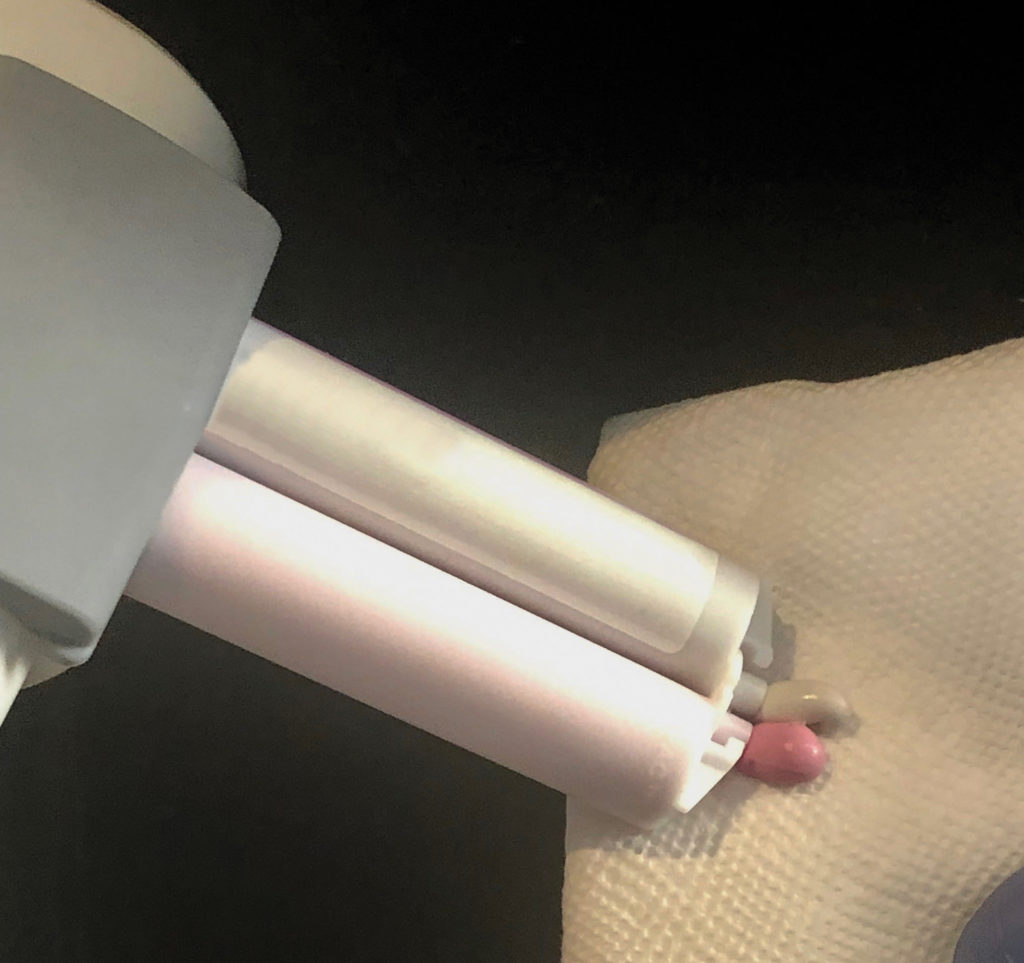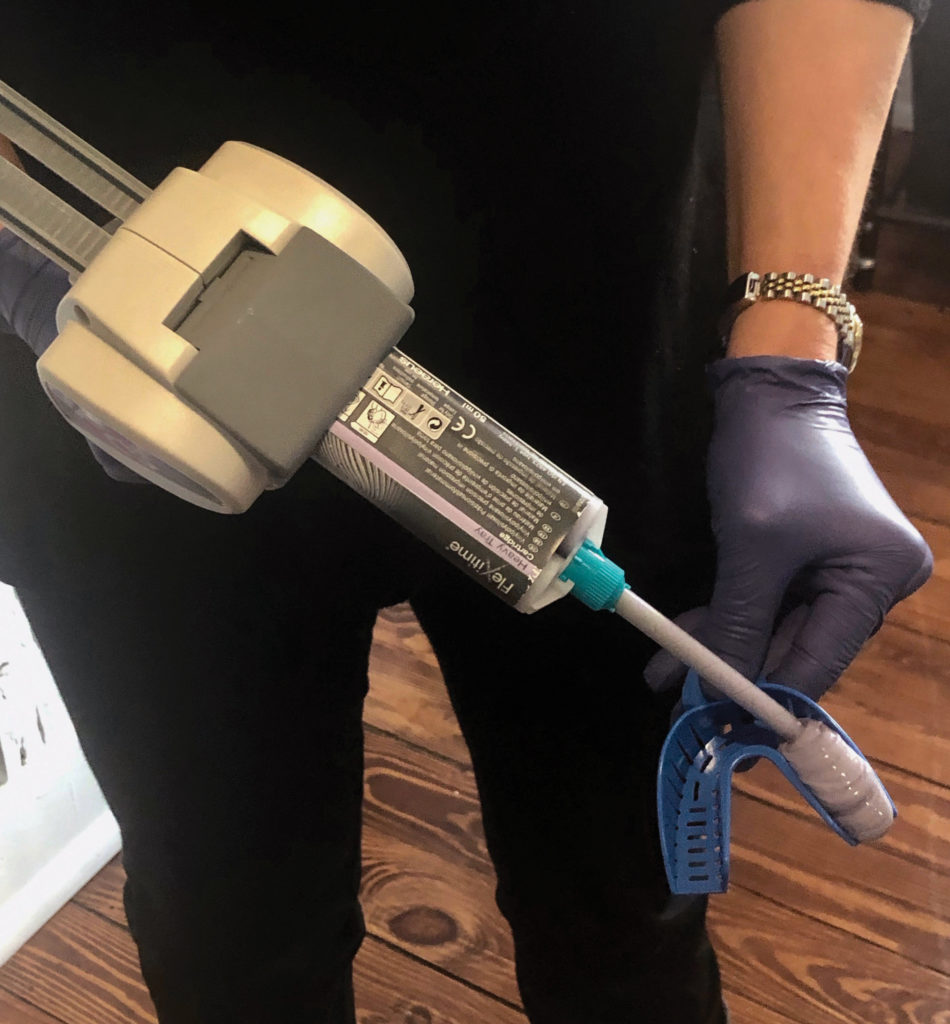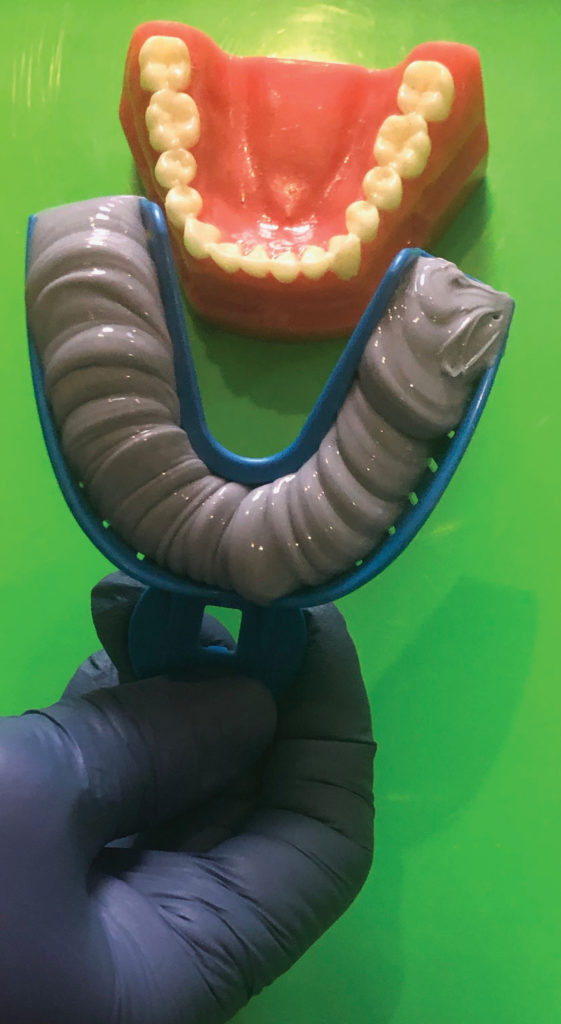Impression materials are used daily by dental assistants, and the ergonomics of impression procedures is becoming increasingly important.
Repeatedly extruding highly viscous materials with a manual automix dispenser can lead to stress-related injuries and chronic pain. Without full mobility, impression techniques become far more challenging than they have to be, and practice productivity suffers accordingly.
Ergonomics for Dental Assistants
To prevent hand strain from getting the best of dental assistants during impression procedures, proper ergonomics involves the appropriate selection of equipment and materials. The hand and wrist are complex machines, containing many physical bridges between muscles, bones, and ligaments that extend from the fingers to the lower arm. Overuse and repetitive stress can lead to painful conditions, such as carpal tunnel syndrome, tendinitis, and ganglion cysts (this is something I’ve experienced myself, and, let me tell you, it is no fun). And this pain only worsens with time.
In many cases, this pain results from repeatedly extruding heavy-body materials using a manual impression gun. My own experience with a ganglion cyst taught me the very real value of proper ergonomics.
Taking Consistently Accurate Impressions
Accurate impressions are an essential step in the production of successful restorations. It is especially important to understand the properties and proper application of the right material for any given situation. Low-viscosity (“wash”) materials flow easily and capture the fine, localized details of the preparation, while high-viscosity (heavy-body) materials are more suitable for larger quadrant or full-arch impressions and bite registrations.
Equally important is the appropriate selection of the equipment used to extrude the material. Wash materials are usually delivered using some type of syringe directly onto the preparation, while heavy-body materials are typically loaded into a tray using some type of automix dispenser “gun.” It is the repeated use of a manual mixing gun that leads to the development of stress-related injuries.

Enter the BFC3
An electric impression gun can significantly improve the production of consistently high-quality impressions. The BFC³ Powered Impression Gun from Practicon, Inc. is a handheld, cordless, rechargeable, motorized unit that dispenses any type of 1:1 or 2:1 (HP, rounded flange) material at the press of a button. As the manufacturer claims, it can fill a full-arch tray with heavy-body material in under ten seconds. I have personally verified this.

Before the BFC3, assistants or other practitioners would need to carefully apply the correct manual pressure repeatedly to a spring-loaded trigger in order to extrude the material. With the BFC3, they can now let a machine do the work for them.
The obvious benefit of the BFC3 is that it eliminates repetitive trigger squeezing required by manual dispensing guns. This not only removes the potential for hand and wrist injury and pain, it provides a notably faster, continuously consistent flow rate, leading to more evenly distributed material. This can significantly reduce the need for remakes.
Another advantage of the BFC3 over other powered models is that, because it uses standard automix cartridges, it is almost certainly compatible with whatever impression material most practices are currently using. Other manufacturers require the use of special cartridges that are only compatible with their dispensers. The design of the BFC3 is also similar enough to manual impression guns that dental assistants will not be uncomfortable incorporating it into their normal workflow.
Conclusion
Before a dental assistant reaches the point of developing chronic pain (or even, as in my case, the need for surgery), practices would be well advised to transition to using the BFC³ Powered Impression Gun. This will reduce strain on the hand and wrist and impressions will be more accurate and more consistent than ever. Dental assistants can then focus their energy on other areas as productivity improves.
Written by Shannon Pace Brinker, CDA
Published in TIPS – March/April, 2019

Shannon Pace Brinker, CDA
Shannon Pace Brinker, CDA is a national and international speaker and published author of over 300 articles for various publications. She has been a practicing dental assistant for over 25 years and works for Dr. Robert Korman in Virginia Beach, VA.
Shannon has taught over 2,000 classes on dental assisting technique and over 60,000 dental assistants over the last 6 years alone. Shannon has taught at the Nash Institute, Dawson Academy and Spear Education, instructing through both lectures and hands on programs.
She has written over 300 articles in regards to Clinical Application and has a current column in Dental Product Reports for the team evaluation of dental products and materials. Shannon has her own publication for dental assistants with partnership of Schein Dental called “Side by Side”. She has started one of the first online platforms designated for dental assistants called the Academy of Chairside Assisting.
Shannon is an active member of the AACD. She was the first auxiliary to sit on the AACD Board of Directors and was awarded the Rising Star Award. Shannon was has also been recognized as one of Dentistry Today’s Top 100 Clinicians for the last 10 years, Dental Products Report 25 most influential women in dentistry, the Lucy Hobbs Award, Sunstar Butler achievement award and Dr. Bicuspid’s Dental Assistant Educator of the year.
Category: Merchandise
Back to Articles